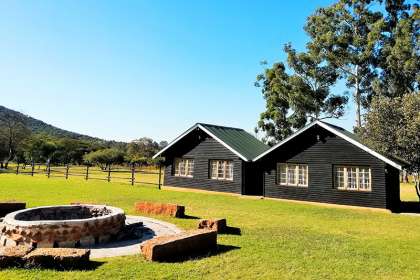Battle of Isandlwana
Battle of Isandlwana
The Battle of Isandlwana
In December of 1878, the British presented an ultimatum to the Zulu King
Cetshwayo who did not agree with the terms, and this resulted in the British
declaring war. The British commander-in-chief in South Africa at the time, Lord
Chelmsford moved his troops from Pietermaritzburg to Rorke's Drift, and from
there the British forces crossed the Buffalo river into Zululand. The British set
up camp at Isandlwana, but due to their massive numbers, they were unable to
form a lager to protect themselves. The hard ground at Isandlwana, and the lack
of entrenching tools, forced the British to rely on their superior weapons and
better organisation. Even though the British had lookouts posted, they did not
have a full field of view, so additional reconnaissance was sent out. Although
the reconnaissance units had made contact with some Zulus, and confiscated
cattle, they had not realised the true size and power of Cetshwayo's armies.
Once the camp at Isandlwana was established, Chelmsford decided to divide his
forces, and go forth in search of the Zulus. The first battalion of the 24th
Welsh Borders Regiment were left behind to guard the camp. On 22 January 1879,
while Chelmsford was out looking for the Zulus, they attacked the camp at
Isandlwana with the entire Zulu army which consisted of about twenty thousand
Zulu warriors. The British soldiers which totaled about one thousand five
hundred, fought bravely, but were unprepared for the attack and were totally
overwhelmed. Approximately sixty of the British managed to escape, and because
the Zulus took no prisoners, all the rest were killed. The Zulu forces only
suffered about a thousand causalities.
The British army suffered one of its worst defeats at the hands of a
technologically inferior indigenous force at Isandlwana. It has been often
thought that the British had problems unpacking their ammunition fast enough,
which caused their defense to be inconsistent. Another more recent opinion
discovers the possibility that the British tried to retreat, and that the Zulu
forces took advantage of the situation. Other recent research suggests that the
British skirmish line was too long, and instead of standing shoulder to
shoulder, the British soldiers were spaced much to far apart.
Today the Isandlwana Battlefield is famous for its memorial cairns erected to the
British troops, and is possibly the most visited battlefield in South Africa.
The Zulu monument at Isandlwana was designed by Pietermaritzburg sculptor Gert
Swart, and consists of a circular concrete platform which symbolises the kraal
of Zulu rural communities. Four bronze headrests and a bronze necklace echo the
Zulu badge of honour, given by the King for acts of special valour.
Verblyf Naby Battle of Isandlwana
Nxala Ranch
Bed & Breakfast Accommodation in Dundee
11.4km from Battle of IsandlwanaIt offers three stylish en-suite bedrooms, a lounge equipped with satellite TV and music system, a modern, fully equipped kitchen and a spacious "stoep" (veranda) with braai facilities overlooking the dam which is well stocked with bass... …sien meer vir besprekings / navrae en inligting.
Elandsheim Retreat
Bed & Breakfast Accommodation in Dundee
17.8km from Battle of IsandlwanaElandsheim is situated in the heart of the famous Zulu, Anglo and Boer battle sites, 55 km from Dundee, halfway between Johannesburg and Durban. We are surrounded by privately owned game reserves, rivers, waterfalls and magnificent Zululand thornveld …sien meer vir besprekings / navrae en inligting.




